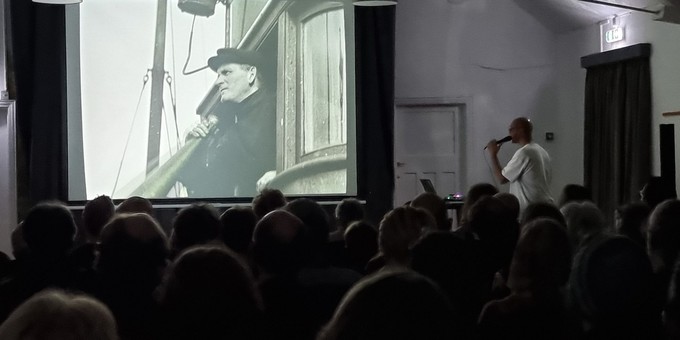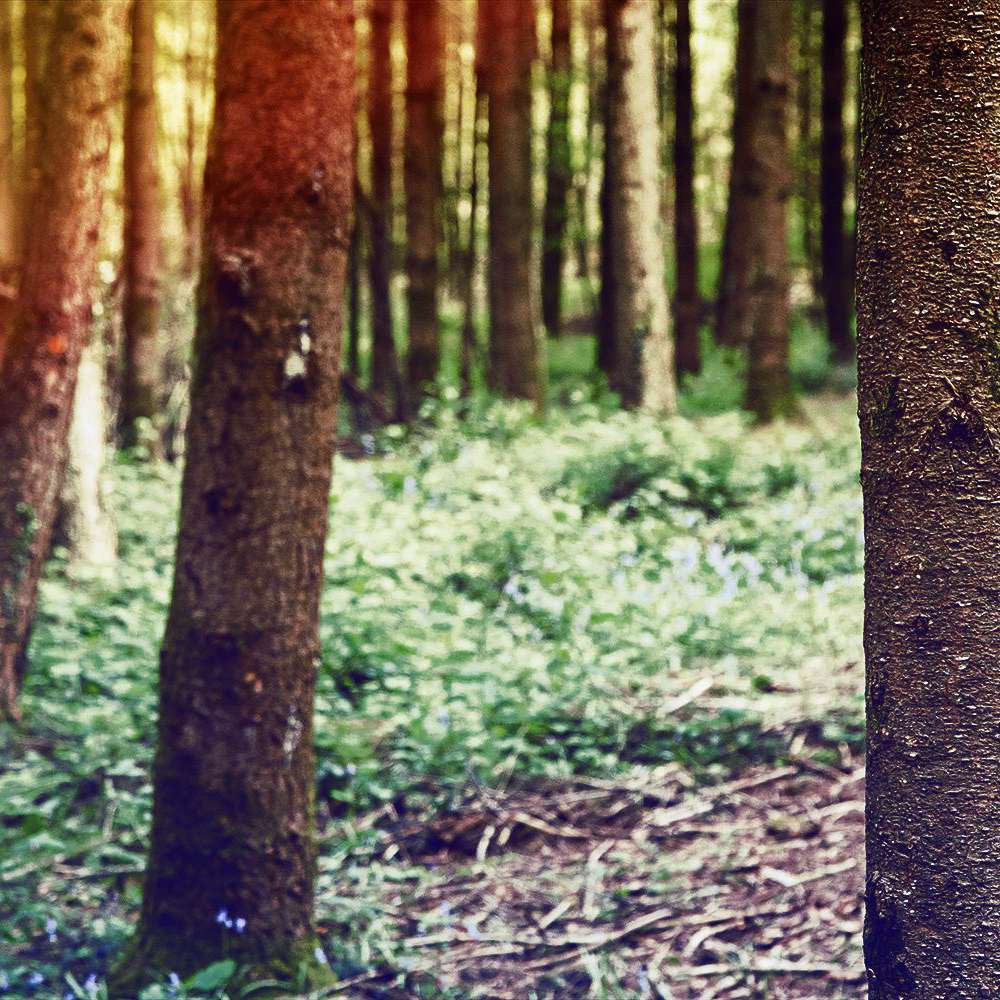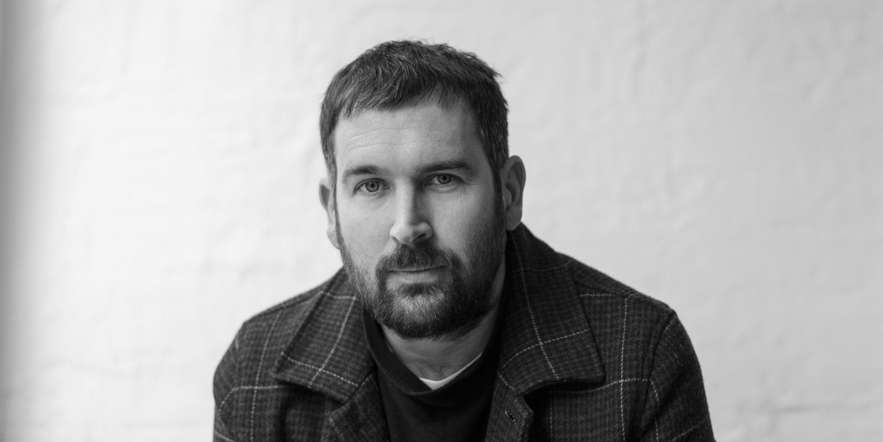
We are working with Historic England and the National Trust to launch a series of self-guided, immersive sound walks to help people discover the magic of their local high streets in September 2021.
We caught up with Oliver Payne, the sound artist creating the sound walk for Great Yarmouth, to find out more about the sound walk, the key themes, stories and sounds that are being explored, his relationship to the area, what he hopes audiences will experience from doing the sound walk, and much more.
Can you tell us more about your Sound Walk? What are the key themes, stories and sounds that you are exploring?
The walk will take you from the site of the former General Hospital, through the bustling market place to pause briefly in front of Great Yarmouth Minster, before returning back through the market place through the historic Rows. I've spoken to an amazing group of people of all ages and backgrounds. The overwhelming feeling from talking to everyone is that Yarmouth is special to them in some way, whether it's through the sense of community, through its significance as a medieval town or becuase of the growing use of empty retail space for creative - and often radical - community activity.
There is a sense of anxiety about the future of the town, specifically as the market place gets redeveloped at a point in time where retail seems to be steadily declining. Yarmouth is full of surprises and full of stories, within this relatively short project I genuinely feel like I've met such a diverse group of people and know they would all get along if they were in the same room at the same time. I also wanted to give voice to the high street itself, through droning air conditioning units and shop entrance bells, that reflect the changes in the high street in the past half century.
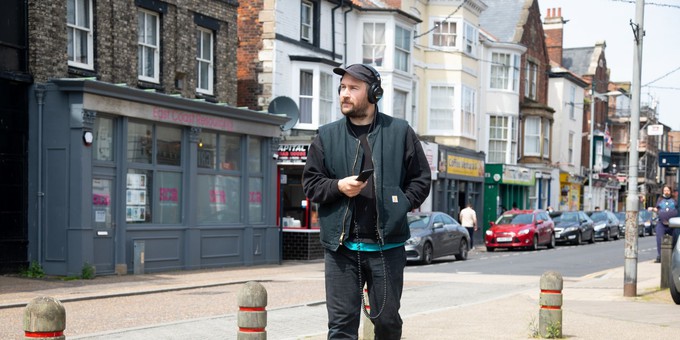
What do you hope audiences will experience from doing the Sound Walk?
I hope that people living in Great Yarmouth might learn something new about their town, perhaps something about its rich built history or about some of the people committed to building a thriving community. I hope that visitors to Yarmouth or those listening from afar will have a better understanding of the place. A broader outcome I would like to achieve is for people to take time to listen, to their environement and to the places they live, and make time to listen as an active process.
How long have you been working as a sound artist?
I've been making experimental music since I was a teenager and was in bands. When I was fairly young I spent a few years making music for Canadian and US television and film. Through experimenting with recording techniques and instrument building I became more interested in sound. I've always been interested in unearthing hidden sounds and using sound as a source to explore other practices such as mark-making, drawing and listening. I have worked for years using digital music production, which still plays a big part in what I do, but I prefer working in the world of mechanical and physical sound making.
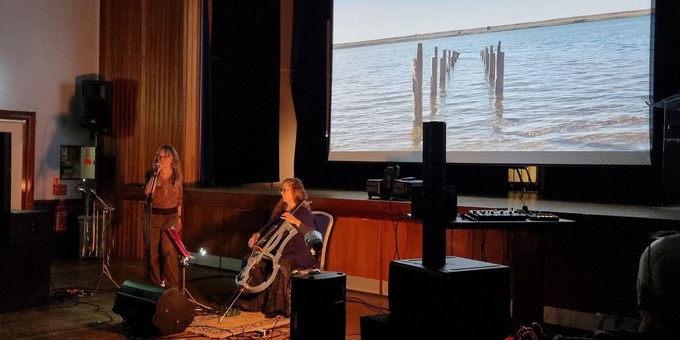
What is your relationship to Great Yarmouth and how has this influenced your approach to this project?
As a child we would visit Great Yarmouth in summer, mostly to visit the arcades, Pleasure Beach and Joyland. It felt really exotic and exciting, always so bustling and noisy. Since moving back to Norfolk and having children of my own we spend a lot of time doing the same thing. We like the winter months too, where the town feels almost deserted at points, the beach is cold and still and the lights along the seafront are dimmed. It's a place that always seems to have a hard time - moslty from people that have never visited - but there's something so alluring about the place, it's easier to experience than to put into words.
I'm also a Director of the Yarmouth based festival of sound and new music, YARMONICS which we've been running for four years now. Through the festival I've really been able to get to know the geography of the place, and to explore parts of the town that are rarely frequented. I'm always bowled over when a member of public stumbles across a free improviser performing in the market place for example, and treats it like it's nothing out of the ordinary. People there are very accepting, and perhaps becuase of the towns rich history of circus and outdoor arts, they're not shocked by the unusual.
What is the most unusual sound or interesting discovery that audiences can expect to hear during the Sound Walk?
When visiting some of the many shops on King Street I noticed that many had entrance bells, or the electronic equivalent. I became really interested in the sounds these things were making, and how they reflected the changing nature of the high street, from a tiny brass bell in a sweet shop to the far less tuneful alarm-like tone of the entrance bell in a convenience shop. I've used these sounds as the source for some sound design, which I hope will add texture and melody to the soundwalk.
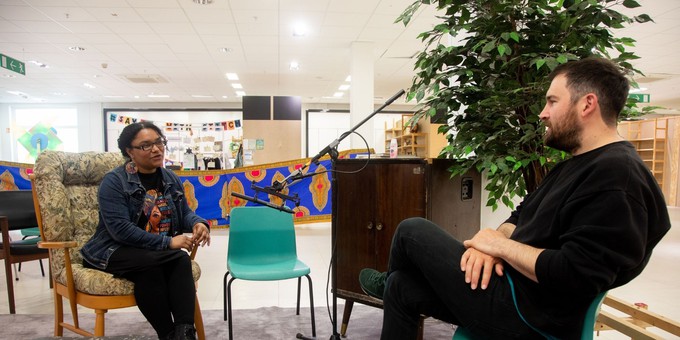
What is the most unusual sound you have recorded in your career?
Perhaps not the most unusual but something I've recorded recently that I really love, is the sound of my three year old son harmonising with various household appliances. I noticed one day he was chanting in harmony with the vacuum cleaner, and didn't stop for the whole time, so I got out my handheld recorder and recorded it. I then tried it out with an electric whisk and the same thing happened, it's as if he has an urge to accompany any loud droning sound, and is able to really move around the harmonics. I have this urge too, and perhaps we all do, but it was just really wonderful to witness and to record. I don't think I have any need to share the recordings but I'm glad I have them in case he loses interest.
Personally, what do you enjoy most about Sound Walks?
I think any sort of activity that invites you to slow down and to focus on something that you might otherwise overlook is really valuable. I'm part of an organisation that runs a project called Homesounds, which is all about using listening practice as a basis for education and wellbeing. It is really remarkable what can happen if you make more time to listen. Even as someone who practices this I sometimes need to force myself to find a bit of space and open my ears. I love the way that soundwalks can help you learn new and surprising things about places you thought you knew really well.
How would you describe the experience to someone who has never done something like this before?
The word immersive is quite overused in art, especially when it is sound, but a soundwalk is just that; it's surrounding yourself with sound and giving most of your attention to a single sense. To explore a place through listening to it, to the people that live there and to the sounds of the place itself.
High Street Sound Walks are being launched as part of Heritage Open days and will be available from 10 September 2021. For more details on each of the Sound Walks, visit: www.HistoricEngland.org.uk/SoundWalks
High Street Sound Walks is a commission by Historic England, National Trust and Heritage Open Days with support from the players of People’s Postcode Lottery and produced by Sound UK. It is part of the High Streets Heritage Action Zones Cultural Programme, led by Historic England.
The High Street Sound Walk for Great Yarmouth is produced in association with originalprojects and Norfolk & Norwich Festival.
